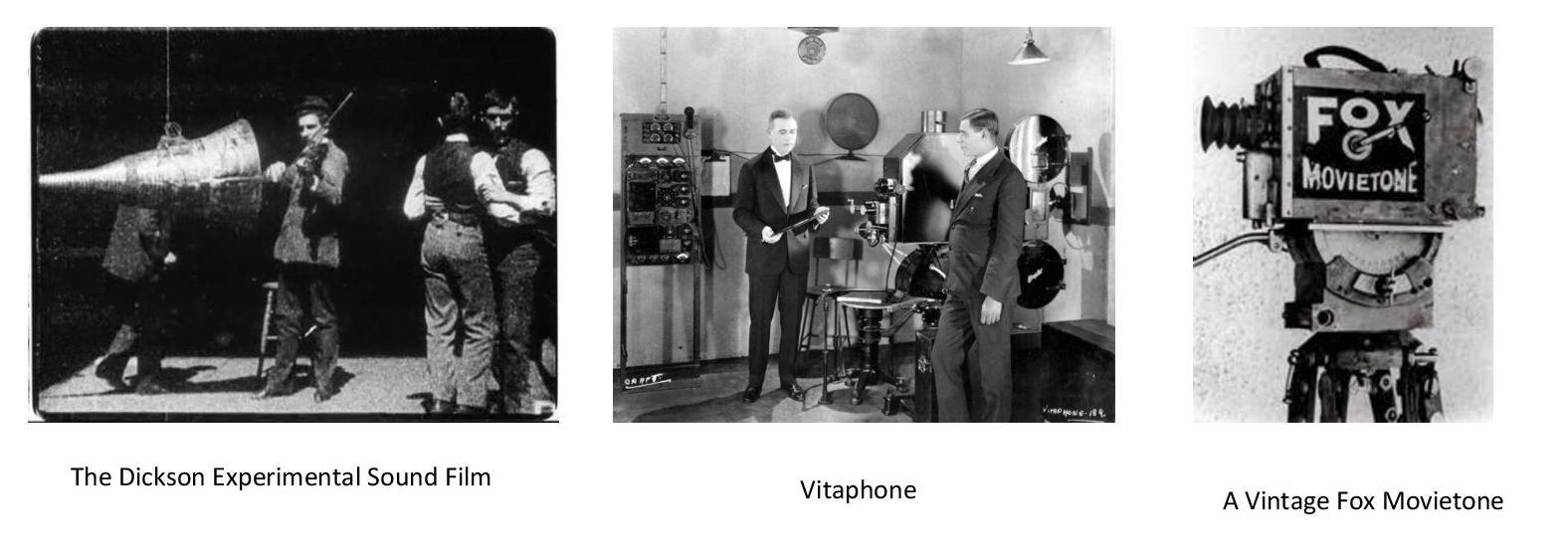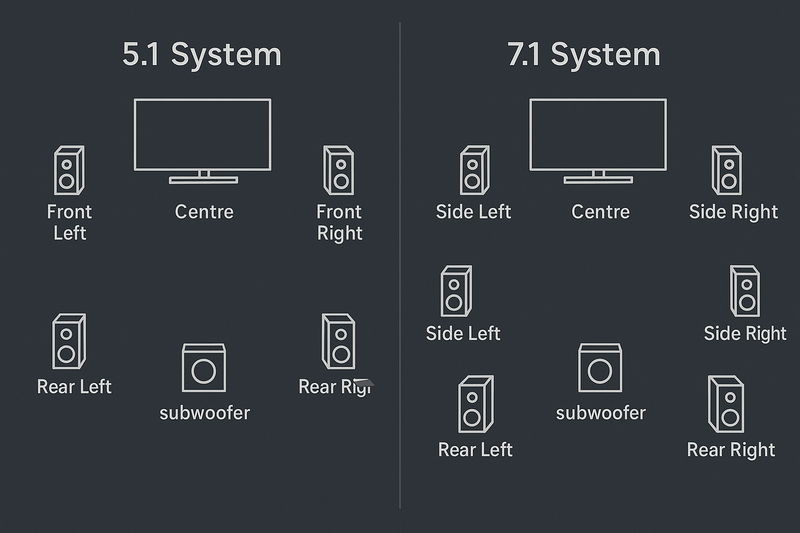Brief Audio History
Audio technology originally evolved for theatres—not for mobile phones or TVs.
Silent Films and Early Innovations
In the early days, movies were silent and referred to as “silent films.” Music was added live during the screening, played by a pianist, organist, or even an orchestra, depending on the size of the venue. This was before the 1920s. Then, AT&T’s Bell Laboratories introduced a breakthrough technology called Vitaphone. It allowed audio and video to play in sync for the first time, marking a major turning point in cinematic sound.
Movietone and Mono Sound
In 1927, the Movietone concept was introduced. Movietone was a sound-on-film system that recorded audio directly onto the film strip, unlike Vitaphone, which used separate discs. This eliminated the need to manually sync audio and video. Movietone used mono technology, meaning it had only a single audio channel and played through just one speaker. Regardless of where the action took place on screen, all audio came from a single source.

Stereo and the Spatial Experience
In the 1950s, stereo sound was invented. Stereo, short for stereophonic sound, uses two separate audio channels—left and right—to create a wider and more realistic sound experience. It’s essential to understand that stereo is about channels, not just speakers. In mono, you can have multiple speakers, but they all play the same channel. Stereo splits the audio into two unique channels, giving sound a sense of direction and space
Emergence of Surround Sound
Later, surround sound was developed. It goes beyond two speakers and surrounds the listener with sound from the front, sides, and back. A typical 5.1 system includes
- Front Left
- Front Right
- Centre
- Rear Left
- Rear Right
- 1 subwoofer for low-frequency effects

A 7.1 system adds two more side speakers. These systems use multiple channels to create the feeling that sound is coming from every direction. Technologies like Dolby Stereo, Dolby Surround, Dolby Digital, and DTS:X are examples of this evolution.
From Dolby Stereo to Dolby Digital
In 1975, Dolby Stereo introduced a 4-channel audio system in theatres. In 1982, Dolby Surround brought this concept to home systems by simulating surround sound using stereo signals. In 1992, Dolby Digital emerged—the first digital surround sound system. It debuted with the movie Batman Returns, offering a much clearer and more immersive experience than previous analogue formats.
Dolby Atmos and Object-Based Audio
Traditional 5.1 and 7.1 systems use channel-based audio. This means sound is mixed for specific speaker setups. Mixing and mastering ensure that individual sounds like dialogue, effects, and music blend well together.
Dolby Atmos moved away from fixed channels. Instead, it uses object-based audio, which supports up to 128 separate audio objects. Each sound can be placed and moved in 3D space with pinpoint accuracy. The software dynamically decides where the sound should go—making sure it’s heard exactly where it should be, regardless of the speaker layout.
Dolby Atmos also introduced height channels, allowing sound to come from above you—adding a whole new layer of immersion.
Dolby TodayFrom theatres to TVs to mobile phones, Dolby has become a household name. But while the brand remains strong, not all implementations are equal—especially when it comes to devices with limited speaker hardware.
Want to know how Dolby Atmos performs on smartphones? Check out our deep dive into mobile Dolby — Innovation or Illusion?
Still, the journey from mono sound to full 3D spatial environments shows how far we’ve come in understanding, designing, and delivering sound. What started with live piano accompaniment has evolved into soundscapes that move and breathe with the story.

